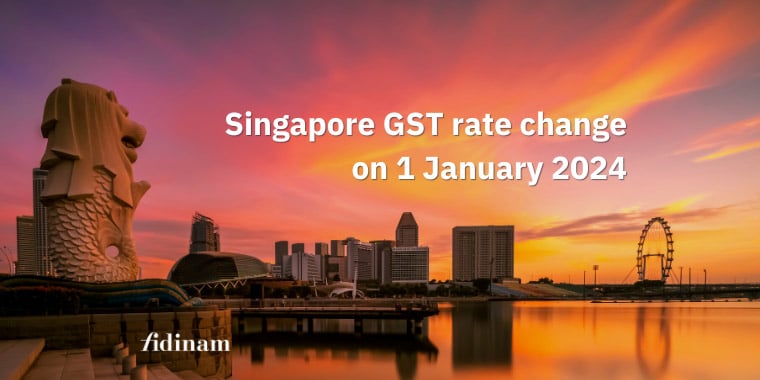
On 1 January 2024, the Goods and Services Tax (GST) rate will increase from 8% to 9% as announced in the Minister of Finance's Budget 2022.
This change is intended to support healthcare expenditure. In light of this development, it is critical for businesses to be aware of the implications and make necessary preparations.

Businesses must update their accounting software, invoice systems, cash registers, and point-of-sale systems to reflect the new GST rate of 9% from 1 Jan 2024. It is important to utilize approved accounting software listed on the IRAS ASR+ website to ensure tax compliance. Additionally, a new digital service is available via API to facilitate seamless filing of GST returns.
To inform customers of the new 9% GST rate effective from 1 Jan 2024, businesses need to update price displays across all sales channels, including mobile apps, self-ordering kiosks, physical outlets, and online websites. If immediate changes are not feasible, businesses can display two prices:
Transparency is crucial, as unjustified price increases using the GST change as a reason may result in penalties from the Committee Against Profiteering (CAP).
The general rule for GST is based on the time of supply. Therefore, if an invoice is issued or payment is received on/after 1 Jan 2024, GST should be charged at 9%. Conversely, if the time of supply is set before 1 Jan 2024, the rate remains at 8%.
However, for scenarios where the time of supply spans the rate change date, businesses need to apply the GST rate change transitional rules. These rules consider factors such as the issuance of invoices, receipt of payment, and delivery of goods or performance of services.
For example, when the invoice is issued, the payment is received, and goods are delivered on/after the rate change date, only the general time of supply applies and the applicable GST rate is 9%.
However, if the invoice is issued and the payment is received on/after the rate change date, but goods are delivered before rate change, the applicable GST rate is 8% with reference to transitional rules.
There are several additional considerations for GST registered businesses, including goods and services straddling the rate change, rebates, returned or exchanged goods, goods put to private use without consideration, sales occurring at or after midnight on the eve of the rate change date, and simplified tax invoices. Businesses should familiarize themselves with these matters to ensure compliance.
The process of updating the GST rate might require time and effort to be carried out accurately. To assist businesses, the IRAS has provided additional resources including an e-tax guide, a dedicated webpage, and FAQs.
By understanding the implications and taking necessary steps, businesses can smoothly transition to the new GST rate and ensure compliance.
Managing this change can be challenging. At Fidinam, we offer our expertise and support to make the process as effortless as possible for your business.
Our team of professionals can help your organization understand and navigate the new GST landscape while ensuring you stay compliant with the updated tax regulations.
Contact us via the form below for a free intro consultation and learn how we can help you.
All content © . All Rights Reserved.